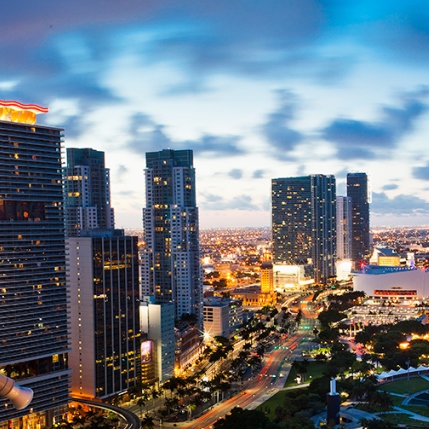 Miami retail is reinventing itself.
Miami retail is reinventing itself.
That’s the subject of a new white paper from Cushman & Wakefield, authored by vice president of Retail Research for the Americas to scope out Miami’s rise as a retail behemoth on the international scene.
“No single market in the United States has seen as much growth from the upscale and luxury retail sector over the past year as Miami,” Garrick Brown said. “Though tourism and Miami’s longstanding role as a hub of Latin American finance and commerce are factors, demographic shifts are the real drivers.”
According to the report, Miami’s demographics reveal a local population that is young, diverse, highly educated, affluent and growing. Of course, intense development in the city’s urban core has stoked Miami’s growth. And Miami’s “shadow market” of international residents, primarily from Latin America, remains one of the primary driving forces behind the region’s strong retail sales growth and sharp uptick in retailer expansion.
“What’s most interesting and critical to note is that Miami finds itself at the epicenter of the two most important demographic trends impacting retail in United States today: the rising impact of the millennial shopper and the growing influence and buying power of the Hispanic consumer,” Brown said. “Because of these two factors, what happens in Miami is critical for the retail sector to watch because it just may become the model for multicultural high street retail for other major markets in the United States, particularly those with a large Latino demographic.”
Miami-Dade County travelers spent nearly $24 billion over the last year, according to the report. International travelers spent almost 80 percent of that total—and those numbers are expected to grow.
At the same time, the number of high-income households in Miami has increased dramatically, making it an ideal market for high street retailers. Hispanics, which comprise more than two-thirds of Miami-Dade County’s population, are the fastest growing segment of the American population and have exhibited the highest increase in overall buying power.
“This is an exciting time to be in Miami,” Cushman & Wakefield senior director Greg Masin tells said. “A new generation of consumers, both local and international, is elevating the city’s retail market to new heights.”
Meanwhile, the Miami-Dade County multifamily market remains healthy with a 97.1 percent occupancy rate and 23,000 new apartments are currently under construction. Rents continue to climb and new residents are pouring into the region, the report reveals. New residents translate to new consumers and a boon for local retailers.
Between retail projects already under construction in Miami-Dade County and those slated to begin work shortly, Cushman & Wakefield points to over 1.9 million square feet of new retail space in the pipeline with delivery dates through 2018. More than 50 percent of this space has already been leased.
The report also notes tight vacancy, aggressive rental rate growth, robust residential development and escalating demand combining to produce the retail construction boom that is underway. And when it comes to the luxury retail sector, no other major US city has seen as much growth, active requirements or leasing activity over the past year, Cushman & Wakefield reports, and this is not likely to change in 2016. All told, Miami now ranks eighth in the nation in terms of retail development.
“Miami’s retail scene is more vibrant and diverse than ever,” Masin said. “It’s being driven by an incredible demographic profile and rock-solid market fundamentals. It’s like nothing we’ve seen before, and we’re very bullish on the future of retail in Miami.”
Source: DBR

